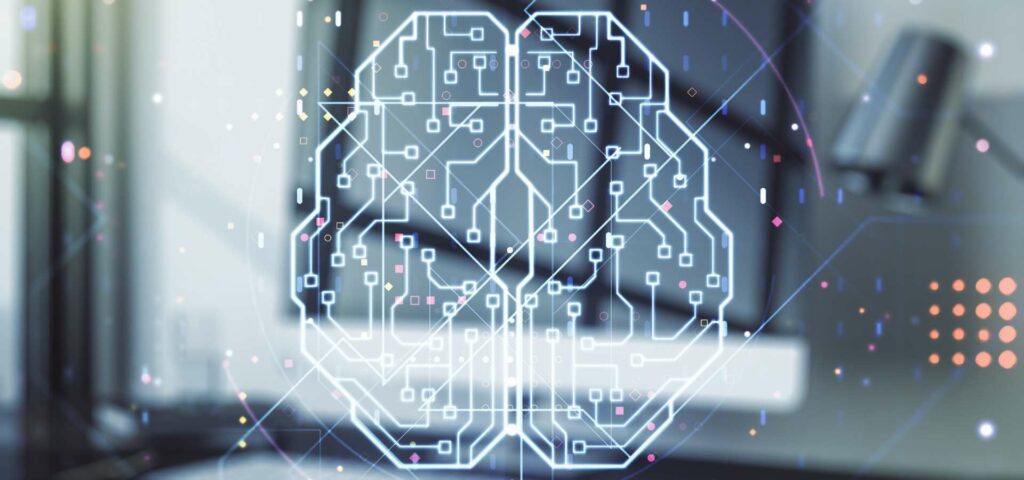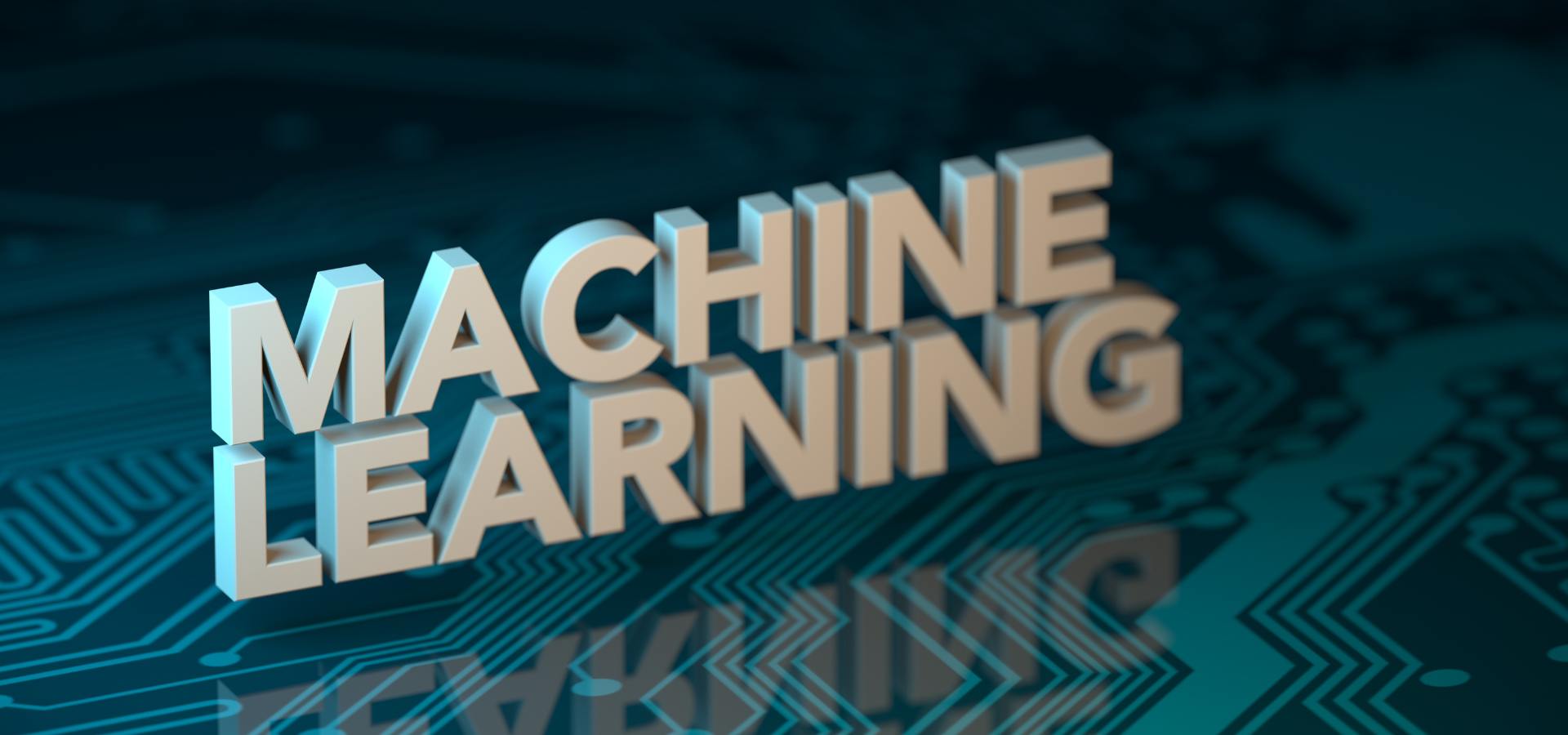Every bank holds a huge amount of data. Over time, the help of an additional specialist becomes necessary to deal with it. However, it does not have to be a human – artificial intelligence is enough. Machine learning in banking can be used in many ways – from predicting customer behavior to analyzing documents. Find concrete examples of how AI and machine learning can be used in banking!
Table of Contents
- What is machine learning?
- What is machine learning in banks based on?
- Machine learning use cases in banking
- Machine learning financial services? Check out Ailleron!
- FAQ
What is machine learning?
The basis of any artificial intelligence, i.e., a system that aims to mimic the actions of the human brain, is machine learning. It involves adapting the artificial intelligence algorithm to its needs by “teaching” it new skills, such as object recognition or correlation, and thus making appropriate decisions. It is sufficient to provide the algorithm with specific data with labels and create its own picture of the world based on this. It is also possible to introduce rules or principles into the system and let the algorithm make decisions based on these. It is then shown when it has made a mistake and when it has given the correct answer, so that it performs better and better with each successive attempt. Moreover, algorithms can also learn independently, processing data and finding patterns. Machine learning is a highly flexible solution. It can be used for almost any task that requires analysis and inference. Not surprisingly, it is an excellent fit for the financial sector.
What is machine learning in banks based on?
Artificial intelligence in banking can address many areas of banking, including customer service, data analysis, forecasting, and the automation of repetitive processes. However, all of these tasks will rely on specific foundations. So let’s look at what machine learning in a bank looks like.
MLOps
Machine learning banking would lose its’ raison d’etre if not properly designed. Such algorithms need to be adequately tailored to the tasks that the bank will set them as well as to the character of the institution. Such adjustment is provided by Data Scientists, the people responsible for teaching the algorithms. However, at least several specialists often work on the same project, which results in many different versions of the same algorithm.
To optimize their work as much as possible and to avoid fragmentation of activities, a set of practices called MLOps is used. They allow the centralization of activities over the program as well as the collaboration of Data Scientists with the IT specialists responsible for implementing the system. In this manner, it is possible to quickly check the performance of a particular version of the algorithm and what still needs improvement. Due to the use of MLOps, a new system can be effectively implemented into the bank’s structure, its performance can be monitored continuously, and the final version can be adjusted to best suit the organization’s requirements.
Natural language processing
NLP, or natural language processing, is an integral part of artificial intelligence in banking and a subset of machine learning. Indeed, it would be difficult to have an effective chatbot conversation with a customer without the chatbot understanding or creating words. Fortunately, there exists a technology that allows AI to analyze natural language and translate it into symbols that algorithms can process. Through natural language processing, artificial intelligence in banking is able to both converse with customers and analyze banking documents.
GraphML
Sometimes, to extract the essence from data, it is useful to give it a visual form. One option is graphs, i.e., models representing specific objects and the relationships between them. Thanks to graphs created by artificial intelligence, it is possible to see the connections between data, allowing new conclusions to be drawn and important changes to be made. In banking, graphs are often used to analyze customers’ purchasing behavior and create appropriate marketing strategies.

Machine learning use cases in banking
Once we know the foundations of banking machine learning, we can look at specific situations where the technology has been used.
Smart pricing
Although this technology for setting the right price is primarily associated with comparing the price of an organization’s own product with those of other companies, machine learning for banks takes it to the next level. This is because price selection can depend on the price sensitivity of customers. Price and willingness to purchase a product or service are related to each other. Of course, this factor will vary depending on customers’ financial situation or the availability of products. Still, a few basic types of consumers can be distinguished. These are:
- low price hunters – focused solely on getting a particular product or service at the lowest possible price. They know perfectly well the amount of money they can expect to pay for their desired product and are reluctant to choose a better but more expensive option;
- loyal customers – loyal to a particular brand. It is difficult to convince them to choose a product from another company;
- high-value seekers – prioritize the product quality for which they are willing to pay a lot. They are acutely aware of their needs and cannot be satisfied with an option that deviates from their perceptions;
- convenience shoppers – speed of purchase is the most important to them. They are willing to pay more to avoid spending unnecessary minutes on the purchase and save time.
By knowing the type of your organization’s customers, you can match them with the right price for the service you want to sell them. After all, you should use a different strategy for someone driven solely by a low price and a different one for a customer focused on high-quality service. This will allow you to generate interest in the offer you are presenting, and the customer will choose precisely the option you have prepared for them. However, an analysis of this kind would be challenging to perform on your own. Bank machine learning comes to the rescue here. It can analyze the customer’s purchasing behavior at many levels – at the level of the transactions they make, the decisions they make, and the offers they choose. Through such analysis, you can offer attractive prices to specific individuals that they cannot resist, maximizing your organization’s profits.
Anticipating customer behavior
Machine learning in financial services can work equally well when predicting the future behavior of existing customers. The employees may need help to see at a glance that a particular customer is not fully satisfied with the services offered by your bank and intends to move to a competing organization. However, such information will not escape artificial intelligence which scans the actions taken by customers on an ongoing basis. If it detects a situation that is potentially dangerous to your bank’s interests, AI will notify you in real-time, giving you time to develop a response. Preparing an offer that will encourage your customer to give your company a second chance is essential. With the use of AI, predicting such events would be much easier.
Machine learning for financial services also allows combined sales to be applied to specific customers. This involves offering the main service the user is interested in, together with additional options. Although they have not caught the customer’s attention so far, they may be helpful later, or the customer may not be aware of the convenience they bring. Artificial intelligence will closely examine the customer and analyze which option will most benefit the customer, contributing to your bank’s profits.
Anti-fraud systems
Anti-fraud systems that detect criminal transactions, such as terrorist financing or money laundering, must be implemented in every bank. However, not all of these programs are based on machine learning which results in quite frequent errors. The two most common of these are false-negative and false-positive phenomena.
False-negative occurs when a suspicious transaction is classified as neutral by the system, so that an employee does not check it, and criminals are free to continue their business. False-positive, on the other hand, occurs when an indistinguishable transaction is deemed suspicious, resulting in an account being blocked or the ability to transact being withheld. Every bank tries to avoid this type of situation as much as possible because it leads to a lowering of the bank’s reputation and even loss of customers or legal problems. However, with the help of artificial intelligence, it is possible to reduce such occurrences to a minimum. This is because algorithms make it possible to accurately analyze the nature of each transaction, taking into account the details of the specific customer. As a result, the organization will be seen as trustworthy and attract even more customers..
Robotic Process Automation
Every bank is not only a great number of key decisions to be made, but also a series of monotonous processes that can lower employees’ alertness, such as verification of the completeness of documents. So why not shift such tasks to robots? This will avoid burnout in the bank’s office staff as well as important issues being overlooked due to fatigue. With the help of the Robotic Process Automation it is absolutely possible.
Moreover, machine learning has given rise to cognitive robotisation, i.e. robot workers no longer perform actions according to rules only, but think like humans. Such robots make use of the aforementioned natural language processing, text analysis and semantic technologies, allowing them to fully “understand” the documentation being analysed as well as the processes. In this manner they can cope with more tasks than classic non-AI-based robots. Moreover, the introduction of robotisation in a bank makes it possible to reduce annual expenditure on employee payments by 20-30% as well as reduce processing times by 50-60%.

Classification of transactions
Machine learning in banks can also be used to assign categories to transactions affecting customers’ bank accounts. By accessing and analyzing massive databases, artificial intelligence learns how to categorize transactions based on the title of the transfer, its originator, or recipient. This allows for efficient segregation of transactions which will be appreciated by many customers who want accurate control over their finances. Such categorization will also be helpful for the bank itself, which will gain the ability to control the transactions it makes.
Customer segmentation
Artificial intelligence in banking will also be great for customer segmentation. After all, segmenting users appropriately and matching each group with a suitable business model is extremely important. This will not only allow the customers to achieve satisfaction, but also the organization to achieve better profits.
When categorizing customers, it is possible to identify, for example, those who are loyal to the bank and have been using its services for many years. It is therefore worth taking appropriate measures (e.g., special offers) towards them, appreciating their loyalty and confirming that they are important customers for the bank.
Due to segmentation, it is also possible to identify those customers who are most attractive to the bank and who can contribute to increasing its profits. Knowing who belongs to this group makes it possible to take appropriate action and contribute to generating higher profits.
However, advanced customer segmentation would be a difficult task if it were to be performed by employees. Human beings are not capable of seeing all the nuances associated with customer actions. But all these actions will not escape the attention of artificial intelligence.. With its vast amounts of data on customer transactions, decisions made and offers selected, it is able to detect the patterns of individual customer groups and, on this basis, assign them to a specific category. This is not only a significant time saving compared to the work of human employees, but also the possibility of receiving more accurate results, allowing better offers to be prepared and greater profits to be made.
Cash flow forecasting
Improper cash management is the bane of every bank. However, it can easily be avoided by making appropriate cash flow forecasts. By using artificial intelligence for this purpose, you can accurately analyze the financial habits of your customers and create a proper action plan based on this. With the help of AI, you will never be on a razor edge when your bank runs out of cash.
Machine learning financial services? Check out Ailleron!
All the features specified above and much more can be gained by opting for Ailleron’s solutions. For more than a dozen years now, we have been providing the best software, including machine learning services, to Europe’s largest banks, which have significantly increased their efficiency thanks to us.
We know how important it is to match the right systems to the nature of your business, which is why we offer tailor-made solutions. We will carefully analyze your organization’s needs and develop unique software. We assist during the design, implementation and fine-tuning of systems. Ailleron – Your Digital Wings!
FAQ:
- What are the profits of applying machine learning in banking?
Machine learning in banking is, first and foremost, an opportunity to reduce employees’ workload. AI is able to support customer service as well as the performance of monotonous tasks. Moreover, AI allows us to take a holistic look at the data and draw new conclusions from it, improving the actions taken.
- How does the bank’s artificial intelligence talk to customers?
More and more banks are using chatbots, artificial intelligence equipped with natural language processing technology, for customer service. Thanks to it, they are able to understand the messages and create their own. What’s more, AI has access to multiple databases, allowing it to quickly find the source of a customer’s problem and solve it.
- What is the Robotic Process Automation?
This is one of the many opportunities for artificial intelligence to take over monotonous tasks from employees that could cause them to suffer from job burnout and, therefore, lower productivity and overlook details. Among other things, robots can effectively read the documentation and check its completeness.

 Polski
Polski
 Deutsch
Deutsch






